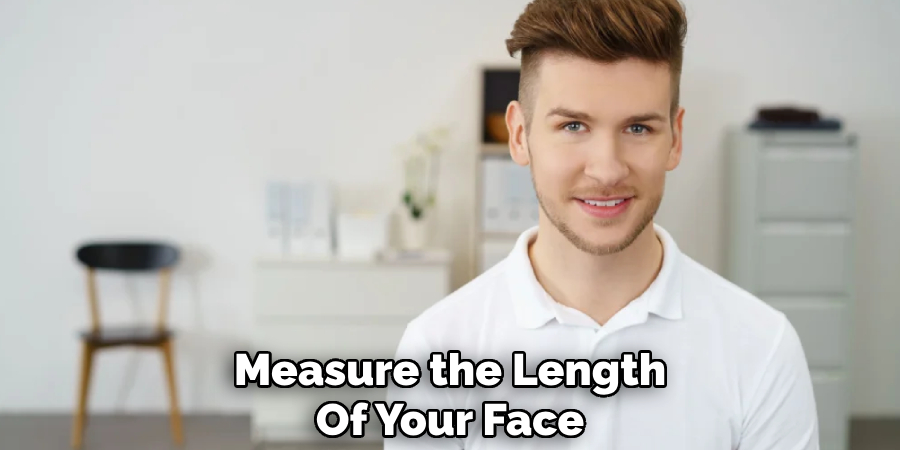Are you curious about your face shape? Do you want to know which hairstyles, makeup looks, and glasses suit you best? Identifying your face shape can help you make informed decisions about styling yourself.

Determining your face shape is essential in understanding which hairstyles, makeup techniques, or accessories best complement your features. Everyone’s face has unique dimensions, and identifying your face shape can help highlight your most flattering angles. Whether deciding on a new haircut or the perfect pair of glasses, knowing your face shape provides a helpful guide for making confident style choices.
In this guide on how to find your face shape, we’ll explore simple methods to measure and identify your face shape, ensuring you have the tools to enhance your natural beauty.
What Are the Benefits of Knowing Your Face Shape?
Knowing your face shape can have a significant impact on your overall appearance. Here are some benefits that come with identifying your face shape:
- Flattering Haircuts: Different face shapes suit different hairstyles, and knowing yours will help you find the perfect cut to complement your facial features.
- Enhanced Makeup Techniques: Certain makeup techniques, such as contouring and highlighting, work best for specific face shapes. Knowing yours can help you achieve a more defined and balanced look.
- Proper Eyewear Selection: Certain glasses frames flatter specific face shapes like haircuts. Knowing yours will make it easier to choose glasses that fit comfortably and enhance your features.
- Hairstyle Inspiration: If you’re unsure what hairstyles will suit your face shape, turn to celebrities with similar face shapes for inspiration. A quick Google search will yield plenty of photos and tutorials on how to recreate their looks.
- Confidence Boost: Understanding your face shape and knowing which styles work best can boost your confidence. When you feel good about your appearance, it shows in your demeanor and attitude.
- Versatile Styling Options: While certain styles might be more flattering for specific face shapes, don’t be afraid to experiment and try different looks. Your face shape doesn’t limit you; it simply serves as a guide to help enhance your features.
What Will You Need?
To get started with styling your hair according to your face shape, you will need a few essentials:
- A good quality hairbrush or comb
- Hair styling products such as mousse, hairspray, and serums
- Hair clips or bobby pins
- Heat styling tools like a straightener or curling iron (optional)
Once you have gathered these items, you can explore different hairstyles that complement your face shape.
8 Easy Steps on How to Find Your Face Shape:
Step 1: Measure Your Forehead
Use a tape measure or ruler to measure your forehead and place it across the widest part of it. This is typically the midpoint between your eyebrows and hairline. Ensure the tape measure remains flat and straight as you take the measurement.

Record this number, as it will be one of the key measurements to help identify your face shape. Remember that accuracy is essential, so take the measurement twice if needed to ensure consistency.
Step 2: Measure Your Cheekbones
To measure your cheekbones, locate the highest points, typically just below the outer corners of your eyes. Place it across the top of your cheekbones using a tape measure or ruler, stretching it from one side to the other at the widest point. Ensure the tape measure is level and straight against your skin while taking the measurement.
Write down the measurement and repeat the necessary process to double-check for accuracy. This measurement is another crucial factor in determining your face shape.
Step 3: Measure Your Jawline
To measure your jawline, locate the base of your jaw below your ears, where the jawbone starts to angle upward. Place a tape measure or ruler at this point and extend it along the edge of your jaw to the center of your chin. Note down this measurement, then repeat the process on the other side of your face.
If both sides are similar, you can multiply one measurement by two to determine the full length of your jawline. Accurate jawline measurements are essential for identifying the overall proportions of your face shape.
Step 4: Measure the Length of Your Face
To measure the length of your face, start by placing the tape measure or ruler at the center of your hairline. Extend it straight down over the bridge of your nose and to the tip of your chin. This will give you the total length of your face.

Hold the tape measure steady and ensure it follows the straightest possible line for an accurate result. Knowing the length of your face is critical for determining its shape and maintaining balance in your overall proportions.
Step 5: Compare the Measurements
Compare the measurements you have taken to identify the shape of your face. Look at the proportions and relationships between the width of your forehead, cheekbones, jawline, and face length. For example, you might have an oval face shape if your face is longer than wide, with a gently rounded jawline.
On the other hand, if all the measurements are equal, you could have a square or round face shape. Use these comparisons to determine your face shape accurately, which can help guide decisions like hairstyles, glasses, and makeup applications.
Step 6: Identify Common Patterns
Consider the unique traits that stand out in your facial structure when identifying common patterns. These patterns include symmetry, proportions, and prominent features such as sharp cheekbones, strong jawlines, or rounded edges.
Observing these details can provide deeper insights into your face shape, allowing you to notice trends and similarities that align with classic face shape categories. This understanding can further refine your style choices to highlight your natural features effectively.
Step 7: Analyze Your Hairline
Take note of your hairline. Is it rounded, straight, or high? This detail can help determine which hairstyles and haircuts will flatter your face shape.
- Rounded Hairline: A rounded hairline typically works well with a variety of hairstyles, including bangs, layers, and side parts. These styles can help soften the angles in your face.
- Straight Hairline: For those with a straight hairline, long hairstyles that cover the forehead can help create balance and soften sharp features. Round or layered cuts can also help add volume to the sides of the face.
- High Hairline: If you have a high hairline, consider trying out hairstyles that frame your face and draw attention downwards towards your chin. This can include side-swept bangs or longer layers that hit at the cheekbones.
- Receding Hairline: For those with a receding hairline, shorter hairstyles can help minimize the appearance of a higher hairline. You can also try styles like a buzz cut or a textured crop to draw attention away from your hairline and towards your facial features.
Step 8. Don’t Be Afraid to Experiment
Don’t be afraid to experiment with your hairstyles! Trying out different styles can help you find the one that best suits your face shape and hair type. You can also play around with other products, such as gels, pomades, or texturizing sprays, to achieve different looks.

Additionally, don’t limit yourself to traditional gender-specific hairstyles. With more and more people breaking gender norms, there are no rules for hair. So feel free to try out any style that appeals to you, regardless of whether it is considered traditionally masculine or feminine.
By following these tips and experimenting with different styles, you can easily find the perfect haircut that looks great and makes you feel confident and comfortable.
5 Things You Should Avoid
1. Relying Solely on Measurement Apps
While measurement apps can quickly estimate your face shape, they are not always accurate. Lighting, camera angles, and even posture can skew the results, leading to misinterpretation.
2. Ignoring Your Hairline
Your hairline plays a significant role in determining your face shape. Neglecting to factor in how it frames your face can result in an inaccurate conclusion.
3. Overcomplicating the Process
Finding your face shape doesn’t have to be a complex procedure. Overthinking minor details or trying to fit into a specific category may lead to unnecessary confusion. Focus on your face’s general proportions and outline instead.
4. Comparing Yourself to Celebrities
Using celebrities as benchmarks for face shapes can be misleading. Photo editing, angles, and makeup can alter how their facial shapes appear. Instead, focus on your natural features to ensure an authentic assessment.
5. Ignoring the Role of Weight Changes
Fluctuations in weight can influence your face shape by altering fullness or contours. Failing to account for this may lead to inconsistencies over time. Always take your current facial structure into account when determining your face shape.

Conclusion
How to find your face shape is a valuable step in understanding your unique features and enhancing your personal style.
You can pinpoint the category that best fits you by observing your facial proportions, hairline, jawline, and overall contours. Remember, no two faces are exactly alike, and your individuality defines your beauty. Use the guidelines as a reference, but always consider your natural features and how they make you feel.
Confidence and self-acceptance are key to making the most of your look!
About the Author
Jane Hubbard is a passionate beauty expert with a wealth of experience in makeup, hair, and overall beauty techniques. After years of working as a hairdresser specialist, she followed her entrepreneurial spirit and started her own consultancy business.
Jane has always been driven by her desire to help others feel confident in their own skin, and she does this by sharing her knowledge, experiences, and practical beauty tips. Through her consultancy, she empowers individuals to embrace their unique beauty, offering tailored guidance that boosts both self-esteem and personal style.
Professional Focus
- Specializes in makeup, hairstyling, and beauty consulting.
- Provides personalized beauty advice, tips, and techniques to help individuals feel confident in their appearance.
- Dedicated to staying up-to-date with the latest industry trends and developments.
- Passionate about creating a comfortable and empowering experience for every client.
Education History
- University of Craft and Design – Bachelor of Fine Arts (BFA) in Woodworking and Furniture Design
- Woodworking Apprenticeships – Extensive hands-on training with skilled craftsmen to refine carpentry and furniture making techniques
- Online Courses & Masterclasses – Continued education in advanced woodworking techniques, design principles, and specialized tools
Expertise:
- Makeup artistry, hairstyling, and beauty consulting.
- Personalized beauty techniques to enhance confidence and self-expression.
- Educating clients on how to maintain their beauty routines at home.
